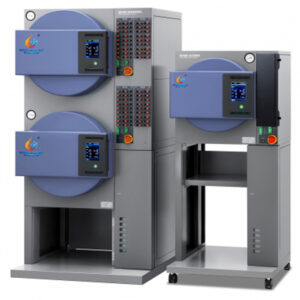
HAST, or Highly Accelerated Stress Test, is a testing method used in the semiconductor industry to evaluate the reliability and quality of semiconductor devices, particularly focusing on their resistance to moisture-induced failures. HAST is an accelerated testing technique that subjects devices to elevated temperature, humidity, and pressure conditions to quickly reveal potential failure modes related to moisture ingress, such as corrosion, delamination, and electrochemical migration.
The primary goals of HAST testing are:
1. Identifying moisture-related failure mechanisms: HAST testing helps manufacturers uncover potential moisture-related failures in semiconductor devices, which could occur when devices are exposed to humid environments during their operational lifetime.
2. Assessing package and sealing integrity: HAST evaluates the quality and effectiveness of the packaging materials and sealing processes used to protect semiconductor devices from moisture ingress. This helps manufacturers identify potential issues and make improvements to their packaging designs and processes.
3. Accelerated life testing: HAST accelerates the aging process of semiconductor devices by subjecting them to harsh conditions for a relatively short period. This allows manufacturers to quickly assess the long-term reliability and performance of their products under moisture-stress conditions.
4. Quality assurance: Performing HAST testing helps ensure that semiconductor devices meet the required quality and reliability standards, which is crucial for maintaining customer confidence and meeting industry regulations.

5. Reducing time to market: HAST testing is typically faster than traditional temperature and humidity testing methods, such as Temperature Humidity Bias (THB) testing, which can take weeks or even months to complete. HAST can provide results in a matter of days, enabling manufacturers to quickly identify and address issues and reduce time to market for their products.
During HAST testing, semiconductor devices are placed inside a test chamber, where they are exposed to high temperature (usually between 110°C and 130°C), high humidity (typically around 85% relative humidity), and elevated pressure (around two atmospheres). The devices may also be subjected to electrical bias, which can further accelerate potential failure mechanisms. The test duration varies depending on the specific requirements of the devices being tested, but it generally lasts for several hours to a few days.
By identifying potential moisture-related failures and assessing the effectiveness of packaging materials and sealing processes, HAST testing plays a crucial role in ensuring the long-term reliability and performance of semiconductor devices.
KES designs and build HAST boards for a variety of different HAST systems and over many decades of experience has developed the expertise in design guidelines, materials science and manufacturing to assure the success of your HAST requirements.